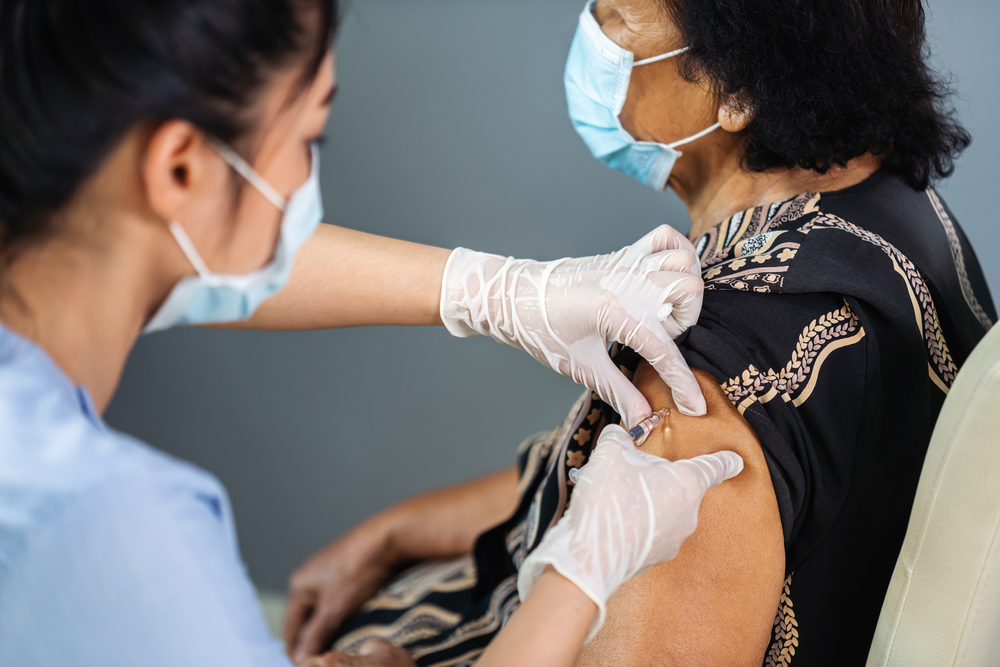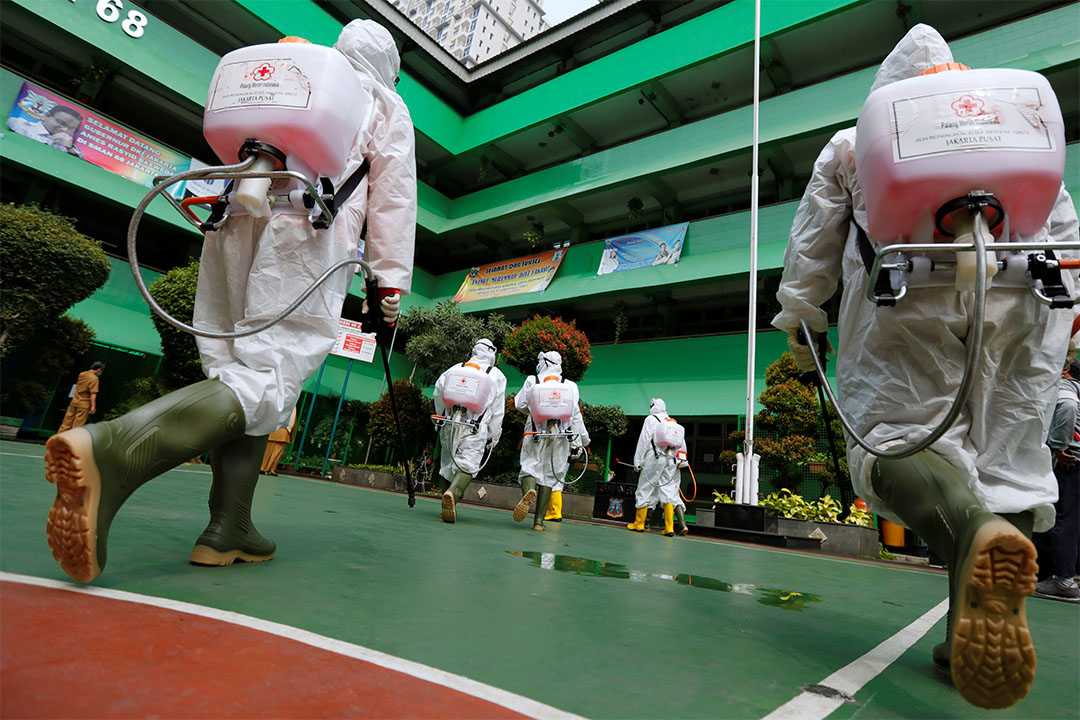
Science's COVID-19 reporting is supported by the Pulitzer Center and the Heising-Simons Foundation.
As the COVID-19 pandemic surges, fueled in some places by new, fast-spreading variants, officials and public health experts are debating strategies for stretching limited supplies of vaccines. And vaccinemakers have been caught in the middle. Over the past week, one has endorsed a U.K. decision to extend the interval between an initial priming vaccine dose and the booster shot to up to 12 weeks. Another has pushed back. The maker of a third COVID-19 vaccine has so far stayed silent on yet another plan, floated by the scientist heading the U.S. COVID-19 vaccine effort but opposed by the U.S. Food and Drug Administration (FDA), to stretch supply by halving both its prime and booster doses.
The dosing debates erupted on 30 December 2020 when the United Kingdom became the first country to authorize emergency use of a vaccine made by AstraZeneca and the University of Oxford, which uses a harmless virus as a vector for DNA encoding spike, the surface protein of SARS-CoV-2. The urgency of the pandemic has driven most COVID-19 vaccinemakers to aim for 3 or 4 weeks between shots, and most clinical trials of candidate vaccines have tested such short intervals, but AstraZeneca and Oxford had conducted trials with intervals between the two shots that ranged from 4 to 26 weeks.
In order to get more people a first dose of a COVID-19 vaccine and at least partially protect them against disease, the United Kingdom's Medicines and Healthcare products Regulatory Agency (MHRA) decided to offer the flexibility of delaying the second shot of the AstraZeneca-Oxford vaccine for up to 3 months. MHRA conducted an "exploratory analysis" of results—which combined data from different efficacy trials of the candidate—comparing vaccinated people and placebo recipients at least 22 days after receiving the first shot and before being given the booster. It found 73% efficacy against symptomatic COVID-19—a figure some found puzzling because the company has reported a lower efficacy, 62%, after two full doses.
Oxford's Adrian Hill, who with Oxford's Sarah Gilbert developed the vaccine, stresses that MHRA came up with the 73% figure. "We didn't say, 'Here's an extra endpoint that's exciting,'" Hill says. But, he adds, "We're now comfortable with that."
An independent group that advises the U.K. government, the Joint Committee on Vaccination and Immunisation (JCVI), that day endorsed the MHRA decision. It also extended the booster schedule from 3 to 12 weeks for a second vaccine, from Pfizer and BioNTech, which is based on messenger RNA (mRNA) encoding the spike protein and had earlier received emergency use authorization from MHRA. "This should maximise the short-term impact of the programme," a JCVI report explained.
JCVI today updated its report to note the "need for rapid, high levels of vaccine uptake among vulnerable persons" is driven by the spread of a more easily transmitted strain of SARS-CoV-2 that is linked to a steep increase in cases in the country last month. The British Society for Immunology issued a statement supporting MHRA's "pragmatic" dosing schedule, but urged the government to launch a "robust" monitoring program to determine how the different intervals affect efficacy. Several scientists also called for more direct clinical trial comparisons of dosing intervals for the various COVID-19 vaccines.
Other agencies disagreed with the approach, however. In the United States, FDA said delaying the second dose for the Pfizer-BioNTech vaccine would be "premature and not rooted solidly in the available evidence." The European Medicines Agency, which has also authorized the Pfizer-BioNTech vaccine for the European Union, basically agreed, but mixed its message by adding the boost could be as late as 42 days after the first shot, noting this occurred with some people in the Pfizer-BioNTech vaccine's efficacy study. And a vaccine advisory group to the World Health Organization, which yesterday recommended that WHO put the Pfizer-BioNTech vaccine on its "emergency use" list, echoed FDA's position.
Pfizer and BioNTech released their own statement objecting to changing the intended dosing schedule, which says to give the booster shot 3 weeks after the priming injection. "The safety and efficacy of the vaccine has not been evaluated on different dosing schedules as the majority of trial participants received the second dose within the window specified in the study design," the companies stated. "There is no data to demonstrate that protection after the first dose is sustained after 21 days."
Data made public last month when Pfizer sought FDA authorization for its vaccine show that 2 weeks after the second dose of that vaccine, efficacy was a remarkable 95%. Between the first and second dose, it was just 52.4%. The actual efficacy could be higher because most COVID-19 cases occurred within the first 10 days after the shot, when an effective immune response is still building up. But the levels of so-called neutralizing antibodies against the virus—which many immunologists contend are the most powerful immune warriors—do not appreciably increase until after the booster dose.
Kathleen Neuzil, an epidemiologist at the University of Maryland School of Medicine, points out that longer intervals between prime and booster doses often improve the strength and durability of vaccine-induced immune responses. But she's wary of delaying second shots for elderly people and others who are particularly vulnerable to disease as some have weaker immune responses to vaccines. "I can't be quite as certain that they don't need that second dose for protection," Neuzil says.
Doctors' Association UK, in a letter this week to U.K. health minister Matt Hancock, spelled out several other concerns about changing the interval spacing, including confusing the public. "Mixed messages and lack of evidence will inevitably lead to undermining the public trust in the vaccine and could negatively impact on uptake," the association letter warns.
Evolutionary biologists have raised an objection to delaying the second dose, too. They stress that a weaker immune response to SARS-CoV-2 in vaccinated people provides an opportunity for the virus to learn how to mutate around otherwise effective antibodies.
Moncef Slaoui, scientific head of the U.S. government's Operation Warp Speed program that is now staging a 30,000-person trial of the AstraZeneca-Oxford vaccine in the United States, agrees that delaying the second dose of the Pfizer-BioNTech vaccine is a mistake. But he thinks data favor his own vaccine-stretching strategy: cutting in half the doses of the other U.S.-approved vaccine, an mRNA preparation made by Moderna, for people between ages 18 and 55. Relatively small phase I and II studies, which evaluated different doses of the Moderna vaccine, found this age group developed similar antibody levels against spike whether given 50 or 100 micrograms. But because the higher dose worked better in people over age 55, Moderna chose that for the phase III efficacy trial, which showed nearly 95% efficacy from two shots. When contacted by Science, Moderna said it had no comment on the proposal but stressed that the FDA authorization of its vaccine is only for 100-microgram doses.
Slaoui has not publicly advocated cutting doses of the Pfizer-BioNTech vaccine, but a similar argument could apply. Its dose-ranging studies suggest 30 micrograms of the vaccine, the amount used in the efficacy trial, didn't trigger any greater antibody levels than did 20 micrograms, at least in the 18 to 55 bracket.
For the moment, the debate about how to stretch supply is moot in many parts of the United States and Europe, where logistics, not supply, have proved to be the limiting factor in vaccination campaigns. But the issue is sure to remain contentious as long as vaccine supplies are scarce, the pandemic continues to overwhelm hospitals, and the death toll mounts.
COVID-19 Update: The connection between local and global issues–the Pulitzer Center's long standing mantra–has, sadly, never been more evident. We are uniquely positioned to serve the journalists, news media organizations, schools, and universities we partner with by continuing to advance our core mission: enabling great journalism and education about underreported and systemic issues that resonate now–and continue to have relevance in times ahead. We believe that this is a moment for decisive action. Learn more about the steps we are taking.








